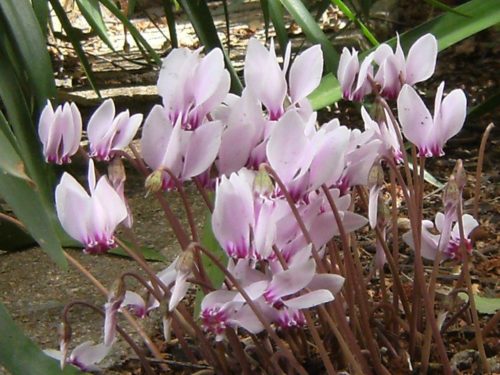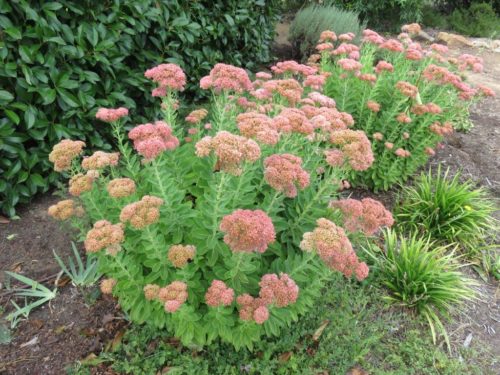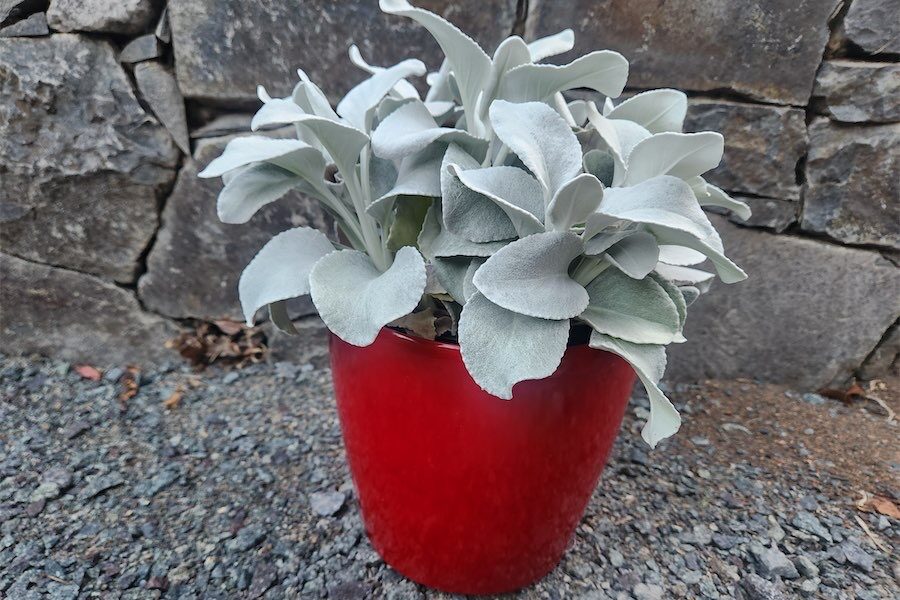
Some of the tiniest plants have the most exquisite flowers, says gardening writer CEDRIC BRYANT.
THERE’S no need to grow big, blousy blooms such as rhododendrons to experience the beauty of flowers.

Some of the tiniest plants have the most exquisite flowers. The wonderful cyclamen family, from Greece, Turkey or Spain, depending on the variety, are ideal for growing in containers. When growing on a balcony, place the plants on a stand to fully appreciate their delicate beauty.
According to the horticultural book “Plant Names Simplified – Their Pronunciation, Derivation and Meaning”, cyclamen is pronounced “sik-la-men”, a contraction of the Greek kyklaminos, from kyklos, a circle, alluding to the coiled stem of the seed pod. Australia and America have a problem in pronunciation compared with the rest of the world.
Let the imagination run wild and the petals of the tiny, delicate pink or white flowers of cyclamen hederifolium can resemble fairies with their wings outstretched, ready to fly. The flowers usually appear from the bare earth unexpectedly in autumn, but with fluctuating weather conditions, they appeared in our garden in the second week in January. The seeds have been quietly multiplying since last autumn with the flowers appearing first, followed by the leaves. When the flowers die down, the leaves will continue through winter. Another similar species, C. Coum, originating on the Greek island of Cos, has white flowers. The larger flowered C. Persicum from Persia (now Iran) makes an ideal hanging basket plant. If purchased as an indoor pot plant, simply plant in a shady spot in the garden when they have finished flowering.

SEDUM “Herbstfreude”, or “Autumn Joy” is one of a large family of 400-500 species, although it’s one of the most popular. This autumn-flowering plant will die down for a rest in winter. Some rest! The instant the old flower stalks are cut off, it immediately starts growing again; the tiny new shoots unaffected by cold or frosts. By spring, the new shoots will be about 10-15cm tall and the flower heads, resembling broccoli, continue to grow all summer. In autumn, the green bunches of flowers turn to pink or white, depending on the variety.
Tough-as-nails sedum survives in poor soils and drought with their water-storing leaves. They rapidly multiply during winter and spring, which is the perfect time to divide it. Plant individually, in groups of three to five, for all gardens, including formal planting as seen here at the Melbourne Exhibition Building gardens. It has twice been given the prestigious “Award of Garden Merit” by the Royal Horticultural Society (UK).
I USUALLY recommend cutting back the leaves of hellebores in autumn. This is to allow sunlight into the base of the plant to encourage more flowers in winter. This year, with changes in weather and increased rainfall, the snails and slugs are having a ball with hellebore leaves, so I suggest cutting all the leaves off the plant now. In our garden, I cut all the leaves off in mid-to-late January. I recommend doing the same with winter-flowering iris unguicularis and polyanthus. Snails love the leaves of the latter much more than hellebores. Polyanthus are an incredibly long-flowering perennial and once the leaves are cut off, new leaves will already be growing.
FINAL thought: although lockdowns are easing, they say that “a garden is a friend you can visit any time”.
Who can be trusted?
In a world of spin and confusion, there’s never been a more important time to support independent journalism in Canberra.
If you trust our work online and want to enforce the power of independent voices, I invite you to make a small contribution.
Every dollar of support is invested back into our journalism to help keep citynews.com.au strong and free.
Thank you,
Ian Meikle, editor




Leave a Reply